Arles, France — UNESCO World Heritage Site in Provence
Widely known as artistic inspiration for Vincent Van Gogh, Arles captured my imagination as I strolled its winding streets admiring well-preserved medieval buildings and other historic sites at every turn. But among the most intriguing scenes in this city in Provence were those of ancient Roman ruins and Romanesque monuments dating back to the 1st century B.C. that form the basis of the city’s designation as a UNESCO World Heritage Site.
The Romans loved the city of Arles, growing it to be the second largest city after Rome. Even today, evidence of their prolific building continue to be found in archaeological discoveries, often delaying new construction as experts examine the findings.
The Roman Amphitheater (Arena of Arles)
In ancient times, gladiators fought to the death and chariots raced before crowds of 20,000 spectators in the imposing two-tiered Roman Amphitheater of Arles, inspired by the Colosseum in Rome.
The impressive architecture of the arched passageways where people entered (shown below) gave me an eerie feeling knowing the violence that they cheered inside.
For the students in the photo below, “gladiator training” is bringing history alive — especially with their authentically-attired instructor in the center.
The juxtaposition of the amphitheater to the old, yet still much newer, architecture across a narrow street creates a dramatic effect at night.
With the fall of the Roman Empire in the fifth century, the arena was transformed into a fortress with four towers to protect the population. 200 houses with a public square and two chapels were enclosed in the center. In the late 18th century the arena’s role changed to that of a national historic monument.
There are strong Spanish ties in the region of Provence and bullfights are held here from late spring to early fall. The arena is also used for concerts.
The Roman Theater
The Roman theater also dates back to the 1st century B.C. May of the relics excavated from the theater are in the Arles Archaeological Museum, but the most famous piece, the Venus d’Arles, is in the Louvre. Much of the theater’s original stone was removed and used for other construction over the centuries, but two columns,benches for spectators, and marble flooring remain.
The Cryptoporticos
The U-shaped Cryptoporticos are underground galleries built in 30-20 B.C. forming the foundation of the ancient forum.
Parts of the forum’s columns can still be seen on the facade of a building (below left) on the Place du Forum. Other sections (some pictured above at the end of the corridor) are in the Cryptoporticos . Today, City Hall (which provides the entry to the Cryptoporticos) and the Chapel of the Jesuit College are located above the foundation.
The Church of St. Trophime
Arles continued to thrive for centuries after the Romans, as can be seen at other historic sites acknowledged by UNESCO designation. The Church of St. Trophime and its cloister, built in the 12th century, are considered to be masterpieces of Romanesque architecture. Today, the cloister is used for special events including the international santon-makers fair showcasing the art and craft of santons, (“little saints”), important figures of Christmas traditions in Provence.
Other sites recognized in the UNESCO designation of Arles are Roman baths, ramparts, and the graveyard of Les Alyscamps.

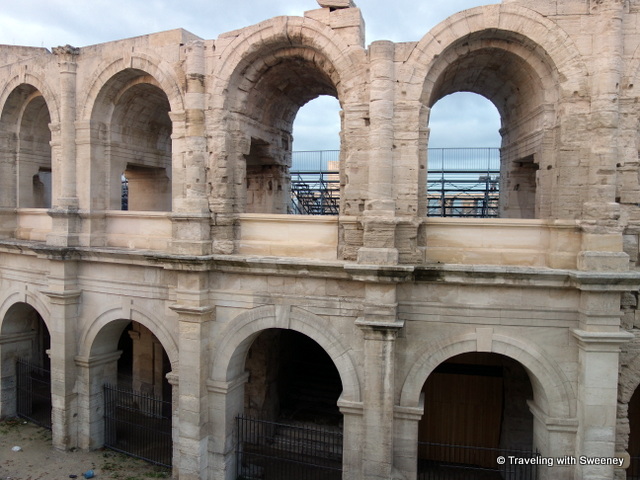
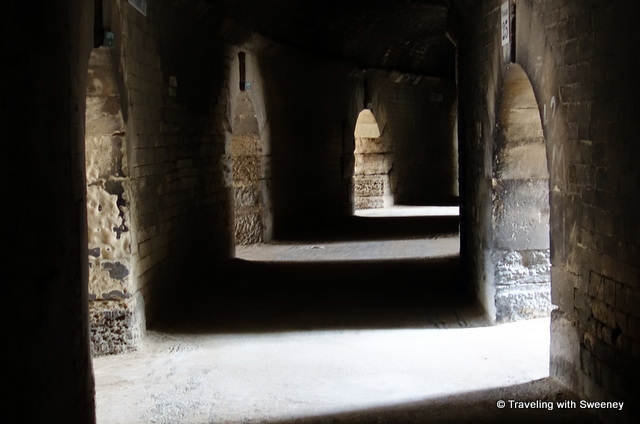
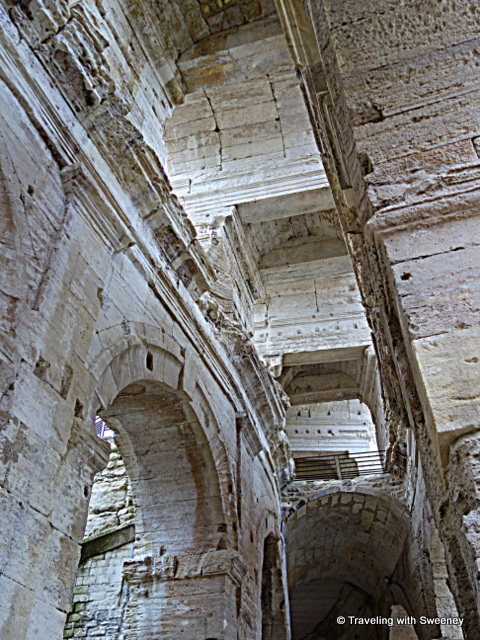
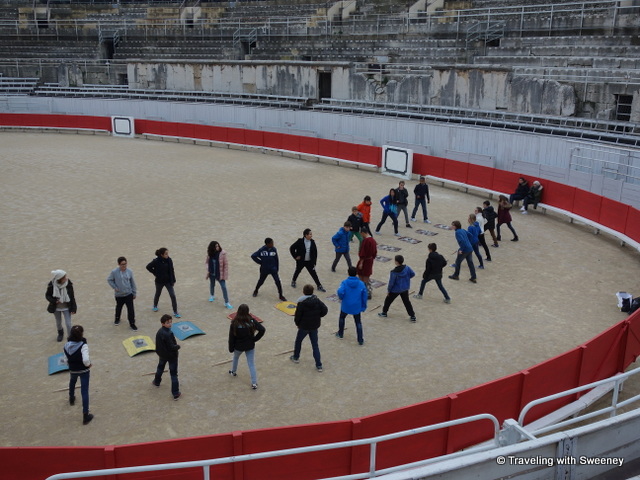
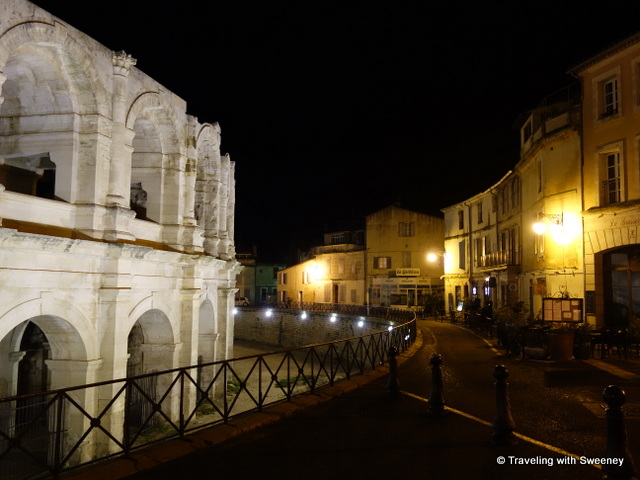
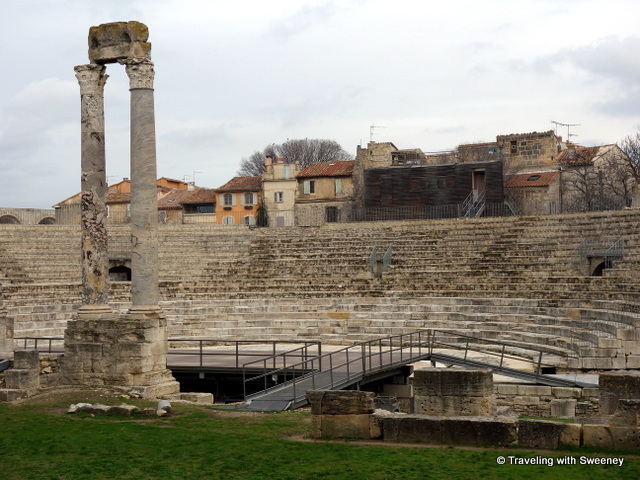
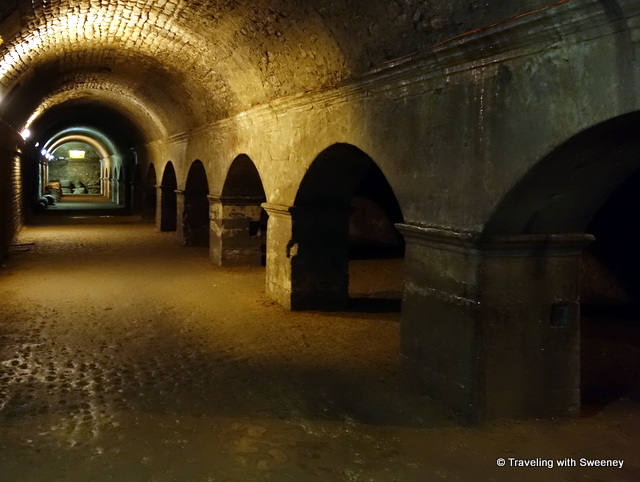
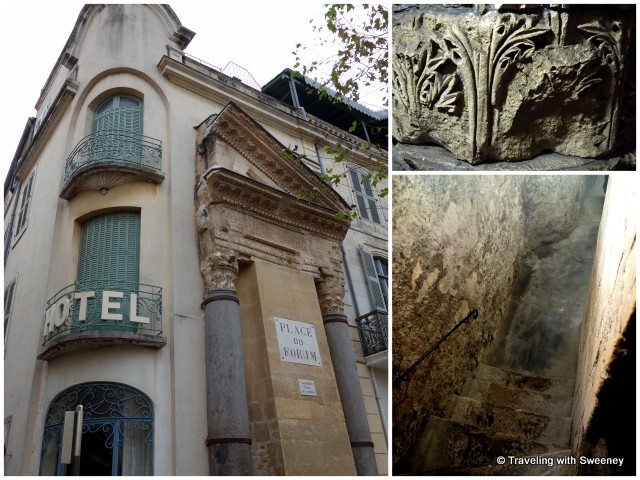
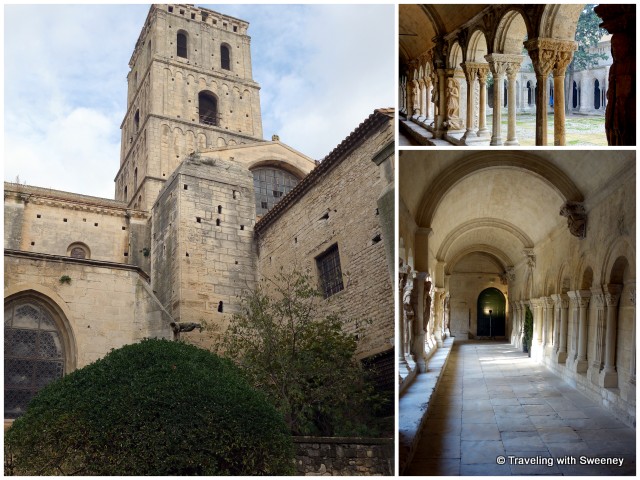
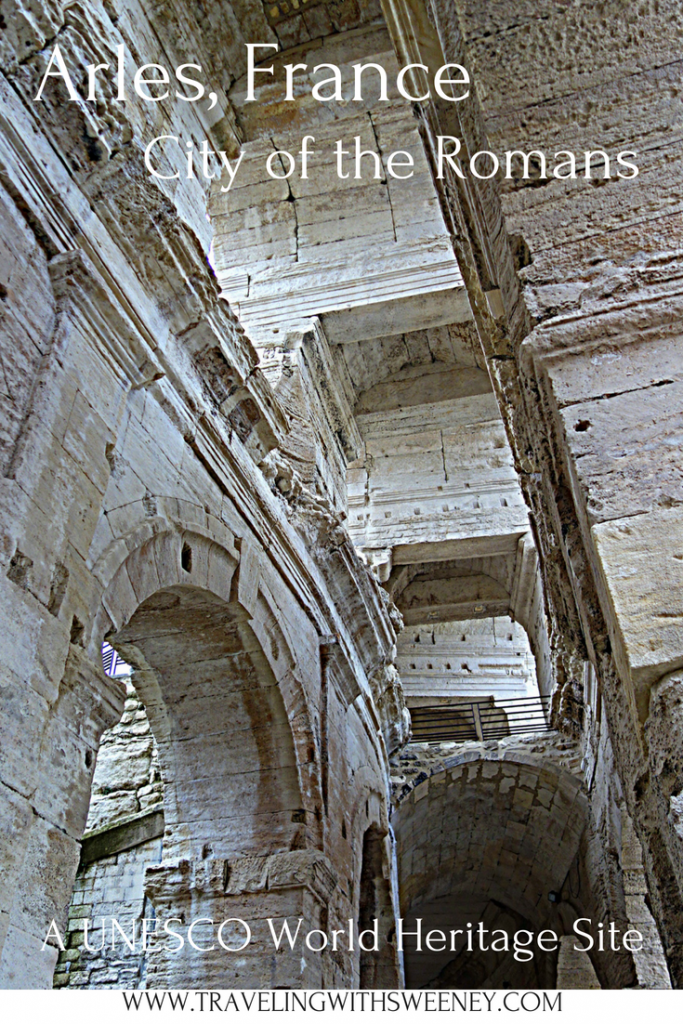



Arles is a highly interesting historical site and probably does not have as many tourists as Rome. Great find!
There’s something for everyone in Arles. Art lovers will love the Van Gogh sites and there’s a great comtemporary culture there, too.
Ah Arles, I’m afraid to state that I’ve visited over 30+ years ago on one of my first jaunts in the southern regions of France – I would love to see this again.
Yes, go back to Arles! It would be interesting to hear what you thought about it the second time around.
I only had the pleasure of passing by Arles on my visit to Provence. I always enjoy seeing more of what I missed.
Isn’t Provence amazing. So many wonderful towns and and sites. Arles is a must for your next time in the area.
It’s amazing how far the Roman Empire extended! Thx for this insightful post on Arles, France.
I was totally surprised by the extent of Roman rule and influence in Arles. The remnants of the empire are amazing.
Appreciated this interesting post – we’ve spent the night in Arles a few times over the years, and always enjoy the city.
I didn’t know that Arles was the second largest Roman city after Rome. It looks like a very interesting place to visit.
It’s very interesting, Donna. Much more than this to tell when I get a chance!
Pinned! I’d love to return to Arles for a longer stay. Your notes and photos are enticing.
I need to get Arles on my list. I spend so much time traveling in my (beloved) UK, I get a little lazy about visiting other places. Thanks for the great photos – I’ve never known how interested I was in Arles until I read a bit here and saw the photos! If I remember correctly, there’s a Charlemagne connection, but I forget exactly what. The amphitheater is amazing. Thank again!
This was a great read! interesting and informative detail of historical site – I enjoyed reading this!
Pingback: UNESCO Treasures on the Rhine: Sites to Visit on a River Cruise | Traveling with Sweeney
I’m still surprised at Roman ruins outside of Italy. There are similar buildings in Jordan too! This is so inspiring. Would love to visit and soak up all that ambiance. Loved the building that incorporated the Roman column.
I love Arles – I went about 30 years ago (how easily that rolls off the tongue!) for their annual photography festival and many of the events were held in the ruins – it was stunning! I’m hoping to go back in 2021 if I can…
The whole idea of experiencing the history of Europe is so romantic. Exploring the crypts would be an eerie, yet interesting adventure.
I love this region and history, I can’t believe it has been over 40 years since I’ve visited the city and region – need to go back again and experience the best of the area and history.
Oh it has been so long ago that we were there, I felt like you gave me a wonderful refresher and certainly a teaser making me want to return. Great post, fabulous photos!